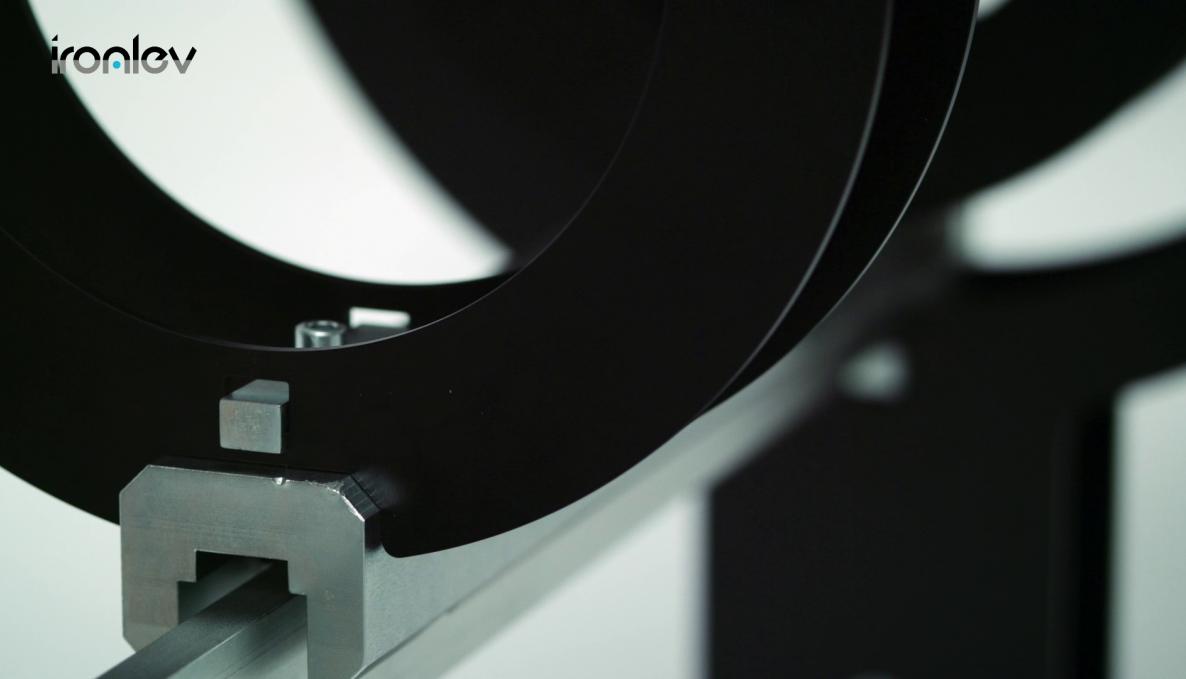TRANSPORTATION TECHNOLOGY TRANSFER: PUBLIC RAIL TRANSPORT ON A MAGNETIC CUSHION. HOW THE ALESTECH SPIN OFF COMPANY TRAINS WILL FLOAT ABOVE TRACKS

To see how train technology is changing, we begin eliminating the need for wheels and lifting the carriages above the track. By 2020 the next generation of railway vehicles propelled by magnetic forces will levitate nearly an inch (2.54 centimeters) above the track. Ironlev, the system developed by Ales Tech, Sant’Anna School spin off company, in cooperation with the Italian company Girotto Brevetti in Spresiano (Treviso), will provide faster trains which can accelerate more quickly than ordinary trains, require less maintenance and reduce environmental impacts.
In IronLev system, the bottom of the train wraps around a steel track. Electromagnets attached to the train's undercarriage are directed up toward the guideway, which levitates the train above the guideway and keeps the train levitated. The trains float on a cushion of air, eliminating friction. Magnets embedded in the train's body will keep it stable during travel.
Ironlev may resemble Hyperloop, a tube-based travel system conceptualized in 2013 by SpaceX CEO Elon Musk, which would carry passengers and freight at more than 700 miles per hour, requiring hours of collaboration and experimentation by engineers companies such as Sant’Anna School Ales Tech. Ales Tech took part in the Hyperloop Pod Competition in 2015 to design the suspension system of the pod and the brake settings on train cars. Top teams selected will race their pods on a Hyperloop test track in California on 29 January 2017.
IronLev presents us an engineering challenge for future enhancements of the transportation technology.
Conventional transit system using "maglev" technology - short for magnetic levitation - use specially designed vehicles that glide on an electromagnetic cushion on a dedicated guide way while Ironlev allows existing tracks to be repurposed. Over 60% of the budget for a traditional maglev train is spent in energy to electrify the whole active track, whereas the Ironlev vehicles are coupled with passive ferromagnetic rails that do not require electrification to provide levitation.
The Ironlev static levitation system aims to make mass public transport more efficient. The fields of application of IronLev are not limited to personal/public vehicles and freight transportation but can be used as a highly advanced and efficient technology in the various industrial sectors. Roller coasters, trolleys and elevators for film industry, automated parking systems, seismic base isolation systems are potentially affected by the new Italian technology. The common point in all these applications is the lack of wheels and thus no wear and friction.
A laboratory demonstration system is being tested. Ales Tech is currently working to build a full-scale prototype by December 2017. The IronLev multidisciplinary team of engineers, intellectual property and innovation experts founded Ales Tech in 2016 and specialized in structural mechanics and dynamics focusing on the development and application of vibration control systems. Girotto Brevetti company has developed innovative engineering products and solution, working with companies such as Pirelli and Technogym.
"IronLev system - explains Luca Cesaretti, President of Ales Tech – represents an opportunity to democratize maglev transit. Thanks to our technology and a very low friction even at high speeds, we can pull a 10 tons wagon with the same force required to lift a backpack of 10 kilograms. We aim to reduce the cost of automated infrastructure. Chief advantages of Ironlev systems are non- contact and no mechanical components (like wheel) will decrease maintenance costs. Now - says Luca Cesaretti - we are defining the steps that will lead IronLev from the laboratory to the real world. We are making contact with companies interested in joining the project. We are committed to completing the system by 2020".



